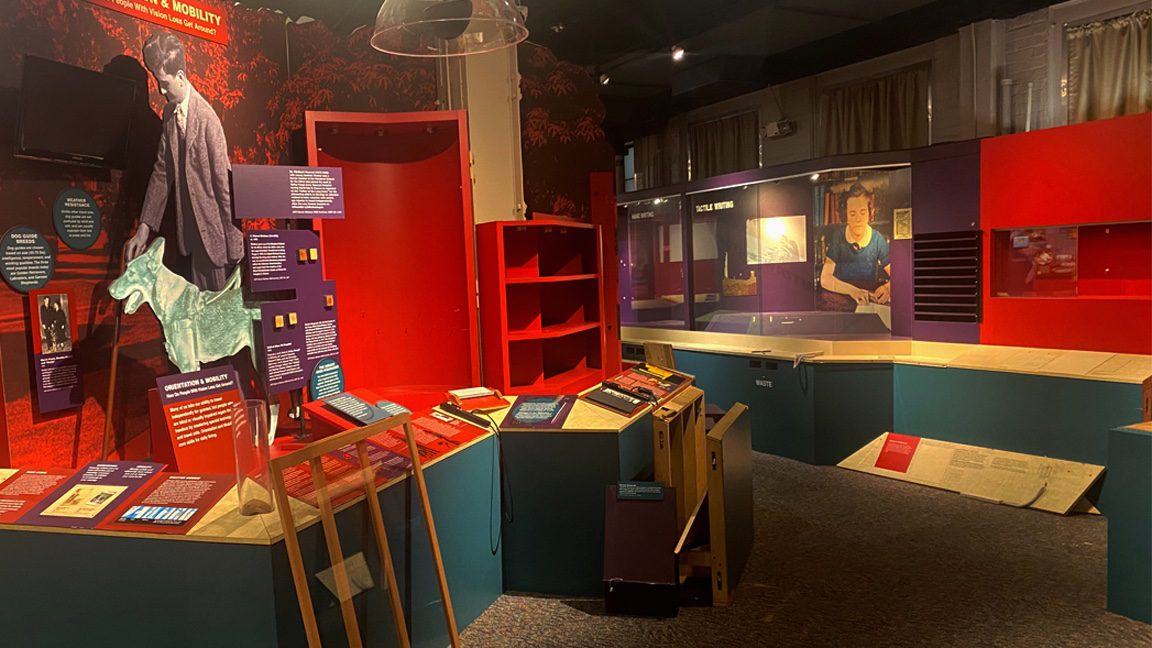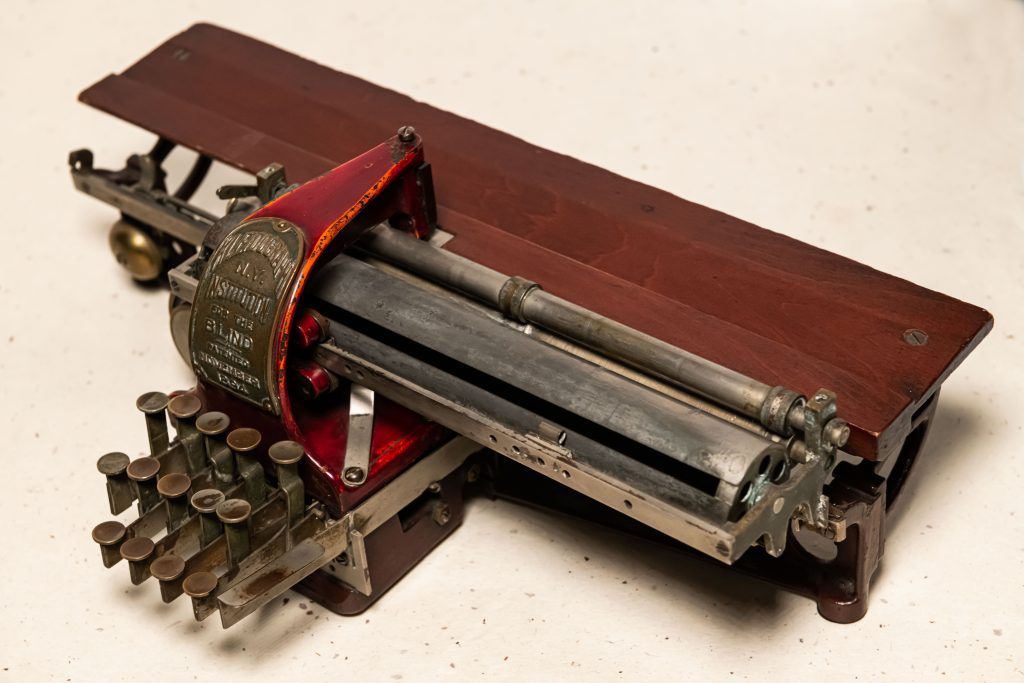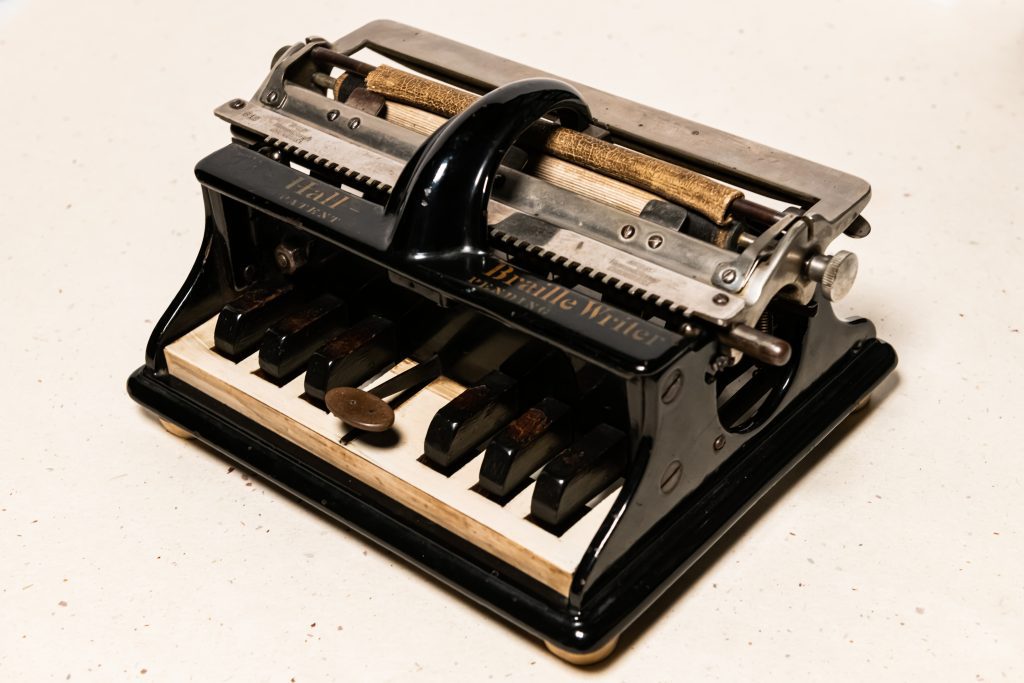Working Through Changes

I gave my last tour of the “old” museum this morning. I thought it would feel weird, but it felt like the hundreds of other tours I have led since I arrived at APH in 2005. The excited faces were the same. The interested questions were the same. And the transition from that uncertain “what is going on in this strange place” look on the visitor’s face to “wow this place is awesome!”—that transition was the same as well.
People are funny. We really are! I had been dreading the phone call from the front desk since our visitor services coordinator, Meg, assigned me the Wednesday afternoon slot. But when it came, I was startled that I felt this giddy excitement. I was excited to show folks around this amazing place that has been making accessible books and educational tools for the last one hundred and sixty-five years here on Frankfort Avenue.
When I walked into the lobby, the three women waiting there smiled and said something like, “We’ve heard about you!” Now that kind of reaction can be good or bad, right? But all of our tour guides give great experiences. I just have been around the longest and I know where all the building’s skeletons are buried. (Not literally, folks. This is not the kind of place that harbors ghosts. To my knowledge, nobody has ever died in the building, and, if there are ghosts here, they are the happy kind.)
So, I gave my last tour, and on Saturday (June 3), our museum closed its doors for the big renovation. We’re getting new plumbing, new electrical, new HVAC, new meeting rooms, improved materials and production flow, new communications and audio-visual capability, and, yes, we get the new Dot Experience at APH.
The Dot Experience will be many times the size of our current museum and will include new education spaces and dramatically expanded new exhibitions. We are going to forge new tools to provide museum accessibility for people of all abilities. We are going to bring the story of innovation, human ingenuity, and creativity that defines the history of people who are blind or low vision to a higher level of awareness. We are going to make Annie Sullivan and Helen Keller’s wish that their lives be featured in a museum a reality. And these stories are going to be told by real people who have lived with blindness and low vision, told by a diverse cast, an authentic cast. It is an incredible opportunity, and I’m grateful that I work at a company with the vision to imagine something bigger and better, something worthy of the stories it will tell.
As I write this, a guy in a hard hat just walked into our 1883 gallery, looking around and holding a cell phone to his ear. “Can you send me the demo floor plan?” he asks the caller. I researched that exhibit, selected the artifacts and photographs, and designed the interactives and audio-visuals. It’s my baby. I realize that I had better walk through the gallery one last time and take some pictures. Because all the planning and dreaming that has been happening behind the scenes is about to become very real. Dot Experience at APH—here we come!
Share this article.
Related articles

Blindness History Basics: History of Braille Writers
When fifteen-year-old Louis Braille presented his tactile system of raised dots in 1824, he hoped the new system would provide a...

Please Touch! Making Museum Collections Accessible
What do you think of when you hear the words “museum collection?” Artifacts like objects, paintings, photographs, rare books, or...

Blindness History Basics: The War on the Dots
Today, it is typical for individuals who are sighted to read print and for people who are blind or low...
